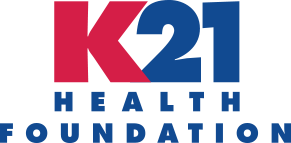After more than a year of the coronavirus pandemic, people across the country are now receiving their vaccinations, signaling the beginning of the end of COVID-19. If you are not yet vaccinated, there are six things you can do to prepare to take that step.
1. Learn more about the vaccines.
It’s a good idea to stay up to date. The CDC, the U.S. Food and Drug Administration (FDA), and our local healthcare systems are great resources.
The three COVID-19 vaccines that are available, Johnson & Johnson, Pfizer, and Moderna, are all safe and effective. Pfizer and Moderna use messenger RNA (mRNA)from the genetic code of COVID-19’s protein. Our bodies then make this protein, which prompts our immune system to produce antibodies, protecting us from COVID-19 infection.
Johnson & Johnson uses viral vector technology, which utilizes a harmless version of a different virus (like the cold virus) to deliver important instructions to our cells—the instructions to make COVID-19’s protein. Our immune systems recognize that the protein doesn’t belong in our bodies, which then triggers an immune response and protects us against COVID-19.
You can learn more facts about mRNA and viral vector vaccines here.
2. Get a good night’s sleep and have a snack.
The night before your vaccine appointment, try to have a full night’s sleep—this will help your immune system work at its best. Also eat a snack or meal beforehand and drink plenty of water—this will strengthen and nourish your body.
3. If necessary, be ready to schedule your second appointment.
Johnson & Johnson only requires one shot, but Pfizer and Moderna both require two doses, spaced several weeks apart (three weeks for Pfizer and four weeks for Moderna). Receiving both vaccinationsduring your specified time frame is important to ensure that you receive full protection from COVID-19. Bring your schedule so that you can book your next appointment if possible.
4. Keep an eye out for side effects.
After you receive your shot, you’ll be asked to wait for 15 minutes to make sure you don’t have an allergic reaction. If you have a history of allergic reactions to vaccines, you’ll be asked to wait 30 minutes.
You may experience side effects like soreness at the injection site, body aches, fatigue, chills, and a headache, but they should go away after 24 to 48 hours. These side effects show that your body is creating an immune response to COVID-19. You can take over-the-counter pain medication to help ease symptoms after your vaccination, but do not take it before your appointment—it may reduce the efficacy of the vaccine.
5. Hold onto your vaccine record card.
At your appointment, you will receive a card with all of your important vaccination information. Keep this with you so you don’t forget when you were vaccinated and the type of vaccine you received. Consider taking a photo of the card as well—so that you can store the information digitally. You must receive the same type of vaccine for both doses, so please bring this card to your second appointment.
6. Continue to follow CDC guidelines.
It can take around 2 weeks after your final vaccination to receive full immunity. As vaccinations become more prevalent in our communities, the CDC will continue to assess this impact and update their guidelines. Keep up to date by periodically checking with the CDC.
When enough of our population has been vaccinated, and we attain “herd” or “community” immunity, we will be able to go back to being with our co-workers, neighbors, friends, and loved ones, with confidence!


